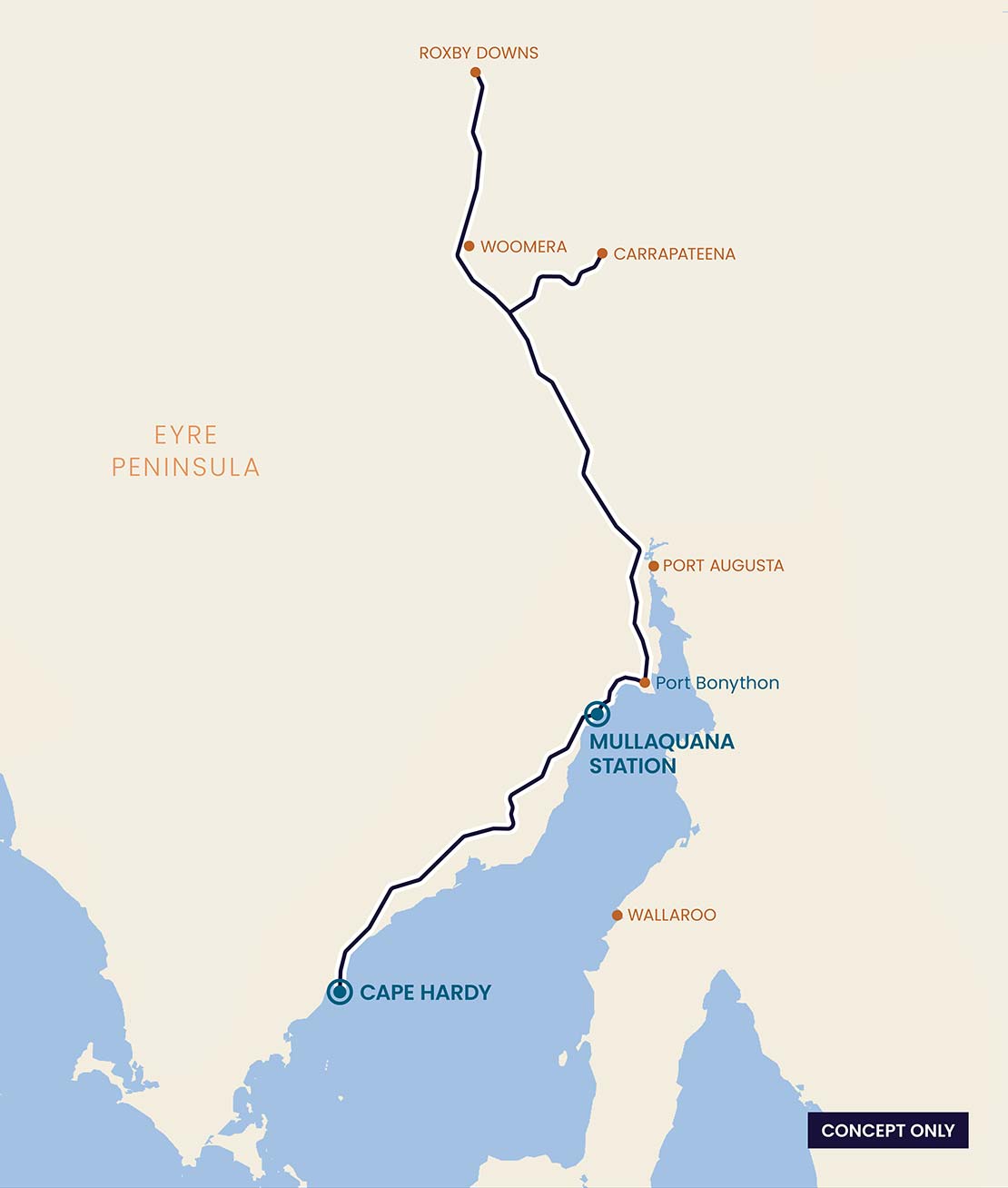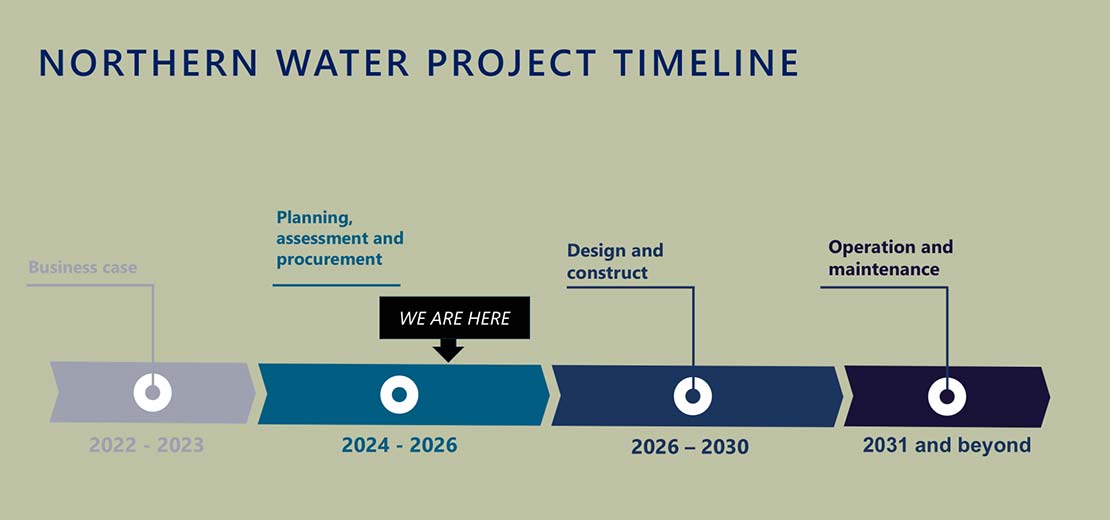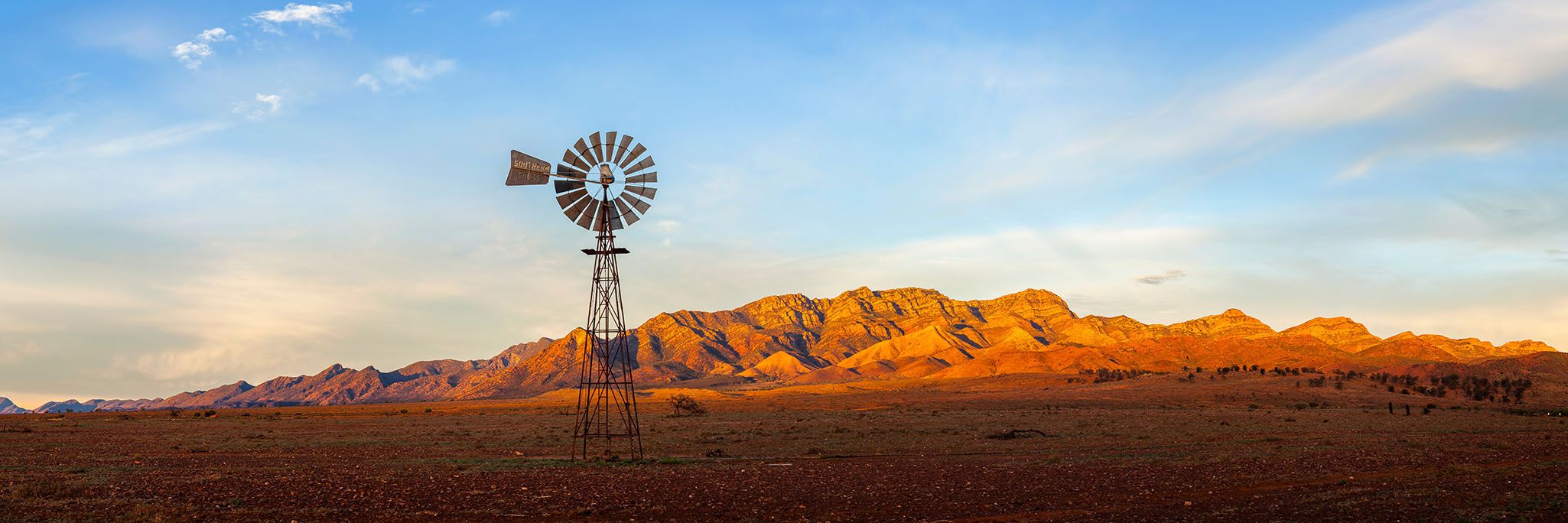Project Overview
Northern Water aims to deliver a reliable and sustainable new commercial water source to meet the growing needs of a broad range of mining, defence, hydrogen and pastoral industries. It will unlock economic growth in industries and regions that are crucial to achieving net-zero targets and will reduce reliance on precious water resources like the Great Artesian Basin and the River Murray.
This would be achieved by construction of a seawater desalination plant drawing water from the Spencer Gulf, connected by a transfer pipeline to northern South Australia.
The desalination plant
The desalination plant would be constructed to provide maximum flexibility to meet fluctuating demands over time, including the ability to scale up should demand increase.
The plant would include:
- a seawater intake system to draw water from the Spencer Gulf using intake pipes, screens, and filtration systems to remove large debris and safeguard marine life
- pre-treatment to filter out finer particles, debris, and suspended solids, before the desalination process begins
- high-pressure storage vessels equipped with semi-permeable membranes to utilise reverse osmosis to remove salt from the water, to produce potable water
- tanks for water storage prior to distribution through the pipeline network
- outfall pipes to return concentrated seawater back into the ocean
- renewable energy integration including electricity sub-stations and transmission lines to power the plant with renewable energy sources
- access and parking to support transportation and logistics including roads, vehicle parking, and loading areas.
Extensive studies have been undertaken at Cape Hardy, approximately 200 kms from Whyalla, and Mullaquana Station, approximately 20 kilometres south of Whyalla.
Information gathered at both sites will inform a decision on the preferred desalination plant location.
The government’s priority is to achieve the best and most appropriate outcome for all South Australians, socially, economically, and environmentally both now and for future generations.
A final decision on the preferred desalination plant location is expected in 2025 once sufficient information has been gathered at both sites and in the lead up to a final investment decision.
A range of considerations such as technical, environment, cultural heritage, socio-economic impacts and benefits, project schedule, and cost will be considered in making the final site decision.
The transfer pipeline network
To transfer the large volumes of potable water generated by the desalination plant, a pipeline network will connect the new desalination plant to its customers. The main transfer pipeline, will link Eastern Eyre Peninsula, Whyalla, Port Augusta, Woomera, Carapateena, Roxby Downs, Pimba, and Olympic Dam.

Supporting infrastructure
Infrastructure such as pumping stations, large storage facilities, flow regulation valves, control facilities, and staff amenities will be required to support the desalination plant and transfer pipeline. Additional road connections, telecommunications lines, and electricity infrastructure will also be needed.
The plant, the pipeline network and supporting infrastructure are currently being designed. Detailed plans will be publicly available as part of the engagement process.
Project timeline

Next Steps
The next steps for the project include:
- engagement and procurement activities with contractors who may design, build, operate and maintain the plant and pipeline to better understand project design and costings
- more detailed evaluation of the overall environmental, social and economic impact of the project
- project approvals including submission of a development application under the Planning, Development and Infrastructure Act (SA) and preparing for a potential a referral under the Environment Protection and Biodiversity Conservation Act (Cwth) that includes the preparation on an Environmental Impact Statement (EIS)
- progression of cultural heritage survey and native title negotiations
- land access negotiations for the plant and pipeline
- ongoing engagement with stakeholders and the community to ensure risks and opportunities are properly understood and addressed
- other activities required to provide the government with a clear understanding of the risks and opportunities associated with the project
